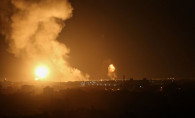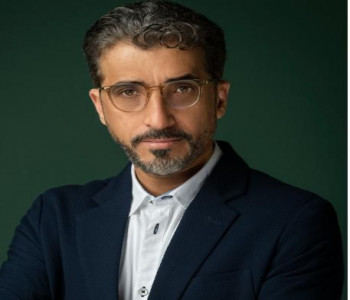Clean energy in the UAE ahead of COP28
Clean energy in the UAE ahead of COP28
The UAE has adopted clean and renewable energy projects as a method to combat climate change, opting for the use of this type of energy, especially solar energy, to provide most of its needs, in a strategic step to achieve sustainable development and preserve the environment.
The UAE has followed several steps to give up the use of oil for good and achieved a balance between economic development and maintaining a clean, healthy, and safe environment. Given its sunny climate throughout the year, the UAE depends on a series of solar stations to fulfill such a balance, including the Mohammed Bin Rashid Al Maktoum Solar Park in Dubai and the Noor and Shams solar power stations in Abu Dhabi.
The UAE will take advantage of hosting the upcoming COP28 climate change summit in November to showcase its latest efforts to transform its economy into a process operated by sustainable energy, especially solar energy, which will enable the country to meet 50 percent of its energy needs through renewable energy.
Solar energy plays a vital role in realizing the goals of the UAE’s strategy for climate neutrality by 2050, which comes as a culmination of the country’s efforts and its march to work for the climate at the local and global levels during the past three decades. Solar energy will contribute to accelerating the achievement of the strategy’s goals, represented in diversifying sources of energy and creating opportunities for sustainable economic and social growth.
This will coincide with achieving a balance between sustainable development and reducing the repercussions of climate change, building a knowledge economy, benefiting from clean technology in achieving sustainable development, and creating a diversified mix of energy sources.
A second source of energy
Solar energy is a second source of electrical energy that is produced in the UAE, as the country enjoys sunny weather most days of the year, turning the sun into an ideal alternative to provide renewable and sustainable energy that achieves a strategy of zero greenhouse gas emissions, and at a competitive cost.
The latest report issued by the International Renewable Energy Agency (IRENA) indicated that solar energy provides a lower cost option compared to all other electricity generation solutions based on fossil fuels, as solar panels have achieved the largest reduction in costs during the past decade.
The UAE launched ambitious initiatives to increase reliance on solar energy, as it continued to build renewable and clean energy projects, most notably the Shams Abu Dhabi project and the Mohammed Bin Rashid Al Maktoum Solar Park in Dubai, which will have a production capacity of 5,000 megawatts by 2030.
Biggest solar energy station in the world
The UAE is building the Al Dhafra solar plant in Abu Dhabi, which is the largest independent station in the world that will produce electricity from solar energy within one site, with a capacity of up to 2 gigawatts of electricity. The plant will support the diversification of renewable energy sources in Abu Dhabi, increase the UAE’s total capacity, and reduce carbon dioxide emissions.
The station aims to reduce the UAE’s carbon emissions by more than 2.4 million metric tons annually, which is equivalent to removing about 470,000 cars from the road and providing electricity to more than 160,000 homes in the UAE.
World’s largest concentrated solar power plant
The fourth phase of the Mohammed Bin Rashid Al Maktoum Solar Park in Dubai, which is being implemented by the Dubai Electricity and Water Authority (DEWA) with a capacity of 950 megawatts according to the independent product system, is the largest concentrated solar power plant in one location in the world that combines the technologies of concentrated solar energy and solar photovoltaic energy.
The fourth phase includes 700 megawatts of concentrated solar power and 250 megawatts of photovoltaic solar panels. The phase includes a system of parabolic reflectors with a total capacity of 600 megawatts (3 units with a capacity of 200 megawatts each), and the highest solar tower in the world, at a height of 262.44 meters, with a capacity of 100 megawatts (with molten salt technology). When completed, the fourth phase will be the largest solar energy storage project in the world, with a storage capacity of 15 hours, allowing for 24-hour energy availability.
So far, 300 megawatts of concentrated solar power have been operated within the fourth phase (100 megawatts from the solar tower and 200 megawatts from the parabolic reflector system), in addition to 217 megawatts of photovoltaic solar panel technology, thus becoming the largest concentrated solar power plant in operation in the world.
The Shams plant in Abu Dhabi is one of the largest concentrated solar power stations in operation in the world with a capacity of 100 megawatts. The plant is considered to be a pioneering project in the field of sustainable energy in the UAE, and it is the first concentrated solar power plant in the Middle East and North Africa.
The station is located about 120 km southwest of Abu Dhabi and 6 km from Madinat Zayed. This site was chosen because it provides sufficient space for the station, a high level of direct solar radiation, as well as easy connection to the existing power grid infrastructure.
The selection of the site is also consistent with the economic development goals of the Emirate of Abu Dhabi, which include stimulating economic activity in the Al Dhafra region.
The plant, which was established in 2013, contributes to supporting the UAE's efforts to diversify its energy mix and reduce its carbon footprint by avoiding the release of about 175,000 tons of carbon dioxide annually, which is equivalent to planting 1.5 million trees or removing 15,000 cars from Abu Dhabi's roads. Since its inception, Shams has contributed to the UAE's goal of generating 27 percent of its electricity from clean energy sources in 2021 and will contribute 50 percent by 2050.
The station, which extends over an area of 2.5 square kilometers, uses more than 768 parabolic inverters to provide sustainable, low-cost, and safe electricity.
Shams is a concentrated solar power plant that produces electricity by relying on the sun's heat. The station uses reflective parabolic troughs, where rows of mirrors capture the sun's heat and convert it into electrical energy using an advanced steam turbine.
The steam heats up within the superheaters and is pumped to drive a turbine, which drives a 15000-volt generator with 100 megawatts of net electricity, enough to power 20,000 homes.
In the same context, the Shams power plant contributes to diversifying energy sources in the UAE and reducing the country's carbon footprint.
Largest solar energy production project in one site
The Mohammed Bin Rashid Al Maktoum Solar Park in Dubai, which is being implemented by DEWA, is the largest project to produce solar energy in one location in the world according to the independent product system, and its production capacity will reach 5,000 megawatts by 2030, with a total investment of 50 billion dirhams ($13 billion).
When completed, the solar park will reduce more than 6.5 million tons of carbon emissions annually. The capacity of the solar energy projects that have been operated in the complex is 2,327 megawatts with solar panel technology, photovoltaic, and concentrated solar energy.
The clean energy production capacity within the energy mix in Dubai is about 15.7 percent and is expected to reach 25 percent by the end of 2030.
The Mohammed bin Rashid Al Maktoum Solar Park contributes to achieving the goals of the Dubai Clean Energy Strategy 2050 and the Dubai Carbon Neutrality Strategy to provide 100 percent of energy production capacity from clean energy sources by 2050.
Biggest independent solar energy plant
The Noor Abu Dhabi plant, the largest independent solar power plant in the world, started its commercial operations in April 2019. It is located in Sweihan, Abu Dhabi, on an area of 8 square kilometers and includes 3.2 million solar panels. It produces approximately 1.2 gigawatts of power, reducing dependence on natural gas and helping to reduce the carbon footprint by 1 million metric tons annually.
First hydroelectric station in the Arabian Gulf region
The hydroelectric station with stored water energy technology, which is being implemented by DEWA in the Hatta region in Dubai, is the first of its kind in the Gulf Cooperation Council countries. The station's production capacity will reach 250 megawatts, with a storage capacity of 1,500 megawatt hours and a lifespan of up to 80 years. The project is expected to be completed in the last quarter of 2024, with project investments amounting to 1.42 billion dirhams.







